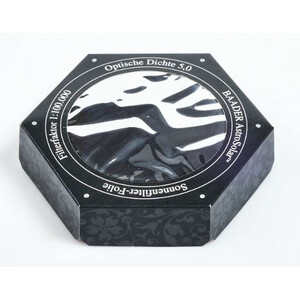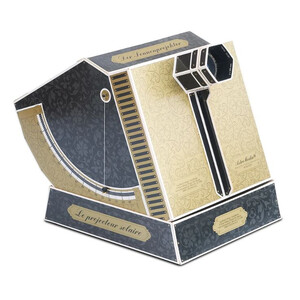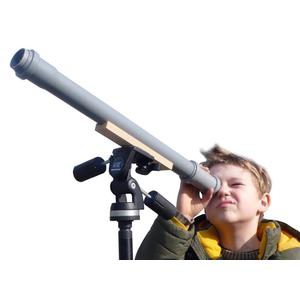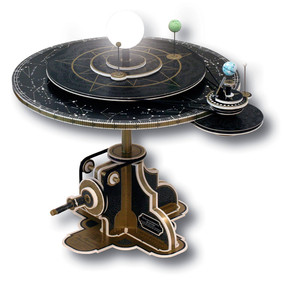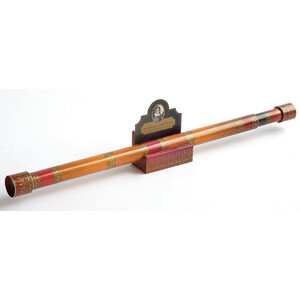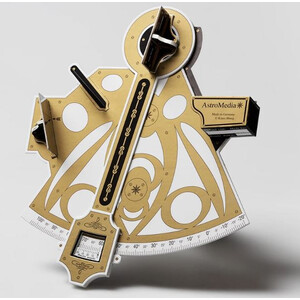Cardboard kit for a fully functional mirror telescope with 16x and 30x magnification and Dobson mount.
Small change, big impact
Isaac Newton (1643–1727) solved the problems of lens telescopes in 1668 with the invention of his reflecting telescope. He simply replaced the converging lens with a converging mirror. The light is reflected in a bundle and directed sideways into an eyepiece by a small, flat mirror set at an angle. Newton's first mirrors, which he ground and polished himself using tools he built for this purpose, had diameters of 25 and 50 mm, a focal length of 300 mm and could magnify about 30 times.
This telescope can do what Newton could
The performance of this reflecting telescope is roughly equivalent to that of Newton's first self-built instruments. The heart of the telescope is the primary mirror, a spherical precision mirror made of ground and polished glass with a diameter of 70 mm and a focal length of 450 mm, which was specially calculated and manufactured for this kit. The eyepieces are equipped with acrylic glass optics. Thanks to the friendly advice of Wolfgang Busch, Ahrensburg, lens arrangements were found that avoid colour errors and distortions as far as possible. They provide 16x and 30x magnification and allow you to see lunar craters and, with careful adjustment of the primary mirror, even Jupiter's moons. For the observation of sunspots, a solar filter attachment with Baader AstroSolarTM solar filter film is available as an optional accessory.
In Newton's footsteps
Of course, a cardboard telescope cannot compete with a much more expensive solid instrument, but with this kit you have the opportunity to follow in Newton's footsteps and carry out all the assembly steps yourself. In the end, you will be just as surprised by the result as Newton was by his first reflecting telescope.
Scope of delivery:
- 12 punched cardboard sheets, A4 format
- Primary mirror Ø 70 mm / focal length 450 mm
- Secondary mirror 15.5 x 22.0 mm
- 5 acrylic glass lenses
